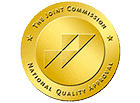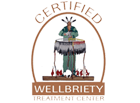Have social networking apps become apps to deal drugs? As the world adjusts to burgeoning technological advances, the way we communicate continues to be revolutionized. Younger generations have grown accustomed to communicating mostly through text, instead of oral communication. Regular conversations are far and few between as a greater online presence is nearly demanded. Networking has grown in the direction of being online, with little face-to-face interactions, but instead with conversations and information sharing that’s in real-time.
The Era of Convenience
With all of the technological advances, our society is in the era of convenience. You no longer have to leave the comfort of your home to go grocery shopping because of apps like Instacart, calling a taxi is a thing of the past with transportation apps like Uber and Lyft, you can even talk or text your therapist through apps like Talkspace these days. The advancements have made day-to-day operations of life extremely convenient, almost breaching convenience to a fault. Older generations label other generations as lazy, because we continue to figure out ways of doing things with the least amount of effort. Despite this, we continue to be surprised with the innovation younger generations display to make this convenience possible. Apps and services that optimize convenience can be absolutely helpful, but what happens when these resources are used for negative purposes?
The Creation and Purpose of Social Media Platforms
The earliest notable social media platform was a website called “Six Degrees”— founded in 1997 by Andrew Weinreich. Six Degrees was a networking site that allowed a peak of 1 million members to create profiles and “friend” each other.
In 1999, LiveJournal was a prominent social media platform for users to blog and stay up-to-date with their friend’s lives. The format and purpose of LiveJournal was the inspiration for the status feature on Facebook.
Friendster, one of the first social media sites, was created in 2002 by Peter Chin, Jonathan Abrams, and Dave Lee. Friendster followed much of what modern social media sites do; it allowed users to interact with friends, create and maintain those contacts, and share online content and media with those contacts.
In 2003, LinkedIn became a valuable online networking resource for businesses and professionals. LinkedIn gave users a place to publicly post their resume and message other business professionals.
In 2004, Facebook was launched by Mark Zuckerberg. Facebook was initially intended to serve only Harvard students as a place to network socially and online. Facebook then widened their membership requirements to be inclusive, which resulted in over 2.2 billion people using Facebook today.
Myspace took hold of the internet in 2006, as a place where users could “friend” each other, create posts, add music to their very own profile page, upload pictures, etc. In 2006, Myspace was the most popular social network in the United States.
Twitter came to life in 2010, as a place where users could share their thoughts and content in real time with their “followers”. Twitter is so popular these days, as 65 million tweets are sent out each day, which comes down to 750 tweets each second (Ahmad).
After twitter, Instagram came into play in 2010. Instagram is a place where users post pictures and videos of themselves, can interact with other people’s posts, message each other, and more.
Drug Dealing on the Internet
Drug dealing online is nothing new, we’ve seen various websites that traffick drugs internationally be scrutinized and shut down, often with a laundry list of indictments for those involved. The Silk Road is just one example of these major drug-dealing websites, that distributed drugs on an international level. More recently, major social networking websites and apps are responding to drug dealing through the services they provide.
Social Networking Gone Awry
Instagram has largely become a social networking app that has accidentally revolutionized the supply and demand of drugs. Drug dealers are able to network, putting them in contact with addicts who need their next fix. Dealers are able to add tags to their posts, called “hashtags”, that make their services easier to find. “The problem is Instagram’s algorithms can’t distinguish the context the hashtags are used in. And if a user then follows a dealer using the hashtags, Instagram’s algorithms then suggest that user follow more drug dealers” (Grothaus). Connecting addicts with drugs has never been easier, with algorithms set up that actually make the process more convenient; “Following the dealer accounts, or even liking one of the dealer posts, prompted Instagram’s algorithms to work as designed–in this case, by filling up a person’s feed with posts for drugs, suggesting other sellers to follow and introducing new hashtags, such as #xansforsale” (Grothaus).
Similar drug-dealing posts are also widespread across Facebook, Twitter, and other popular social networking platforms. Social networking makes it easy to meet, talk to, and keep in contact with all different types of people around the globe— making it the perfect resource for drug manufacturers, traffickers, distributers, street dealers, and those seeking drugs. Both prescription-only, illicit drugs, and synthetic drugs are being dealt through these social networking apps.
What’s Being Done About it?
Recently, “Instagram has blocked search results for certain hashtags, such as #fentanyl, #cocaine, and #heroin, all illegal substances” (Ahmad). However, these types of posts will persist with other eye-catching hashtags and slight spelling alterations. Facebook and Twitter have not figured out how to put a stop to the sale of illegal drugs on their apps.
Cash-Transferring Apps
Cash transferring apps were made for the purpose of convenience when it came to paying a friend back for dinner or other harmless expenses that required money transferring. Unfortunately, cash-transferring apps are being used as a means to pay your local drug dealer. “A new poll commissioned by LendEDU found that 32% of millennials claim they’ve used Venmo at some point to pay for drugs, including substances such as marijuana, cocaine, and Adderall” (Price). Adding to the convenience is the ability to use a credit card to make payments through some of these cash transfer apps, which young adults could do using their parent’s credit cards without their parent’s understanding that the money they are using is for drugs. Adults can also use a credit card for these apps and end up putting themselves in some serious debt, as they are able to buy drugs using money that they don’t have.
Some cash-transferring apps to look out for are:
- venmo
- cash app
- google pay
- paypal
- dwolla
- facebook messenger
- square cash
Sometimes the transactions showing activity of using a cash transfer app, will show up on your bank statement in a way that doesn’t let you know a cash transfer app has been used. If you’re worried that someone you love is making payments using a cash transferring app, be weary of unidentifiable bank statements. For example, cash app use will show up on a bank statement with the prefix SQC*, followed by the name of the person they made the payment to. If dealers create a username that is modeled to look like a normal transaction on bank statements, you may see SQC*Coffee for example, and think nothing of it.
Dangers of Social Networking to your Next Fix
Not only is the buying and selling of drugs illegal, but social networking apps make it so that these transactions are stored information. All of your interactions with prospective dealers are recorded through the app, if your main worry is about getting caught.
More importantly, you could be sold drugs made with lethal chemicals and highly toxic synthetics. You have no idea what is in the drugs you are buying, or if they are even the drugs you think they are. It’s unfortunately common to get prescription drugs off of the street, and now a days dealers making these pills using synthetic drugs and a pill press, resulting in pills that look like the pill you believe it is, but with zero regulation and added synthetics that are absolutely deadly.
Furthermore, you will eventually have to meet up with the dealer/or customer, which is dangerous all on its own. People on the app could be setting you up to rob you, or even worse, to hurt you. You may be able to see someone’s account, and maybe get a feel for the type of person they are, but social networking sites are dangerous because you only see what the other person wants to show you. Networking with random drug dealers is a problem in itself, let alone going to meet them for the drugs they are selling through an Instagram post hashtagged “percocet”.
Reach Out
If you or someone you know is struggling with an addiction, please reach out to us at (877)-RECOVERY or (877)-732-6837. Our team makes themselves available to take your call 24 hours a day, 7 days a week. Because We Care.
References:
Ahmad, Irfan. “The History of Social Media [Infographic].” Social Media Today, Industry Dive, 27 Apr. 2018, www.socialmediatoday.com/news/the-history-of-social-media-infographic-1/522285/
Eaton, Kit. “Instagram Blocks Hashtags Related To Selling Drugs.” Fast Company, Mansueto Ventures, LLC., 18 Mar. 2014, www.fastcompany.com/3021389/instagram-blocks-hashtags-related-to-selling-drugs
Grothaus, Michael. “Instagram Is Helping Addicts Connect with Drug Dealers.” Fast Company, Mansueto Ventures, LLC., 26 Sept. 2018, www.fastcompany.com/90242154/instagram-is-helping-addicts-connect-with-drug-dealers
Price, Emily. “Almost One-Third of Millennials Have Used Venmo to Pay for Drugs.” Fast Company, Mansueto Ventures, LLC., 10 July 2017, www.fastcompany.com/4042950/almost-a-third-of-millennials-have-used-venmo-to-pay-for-drugs




